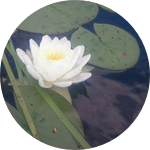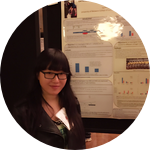About This Project
Heterosigma akashiwo is a unicellular algae that cause Harmful Algal Blooms (HABs) and has been associated with finfish kills for decades. Although no specific toxin has been isolated, its toxicity is considered to be due to variety of compounds. In this study, we would like to analyze biochemical and cellular changes associated with toxicity in H. akashiwo blooms using a metabolomics-proteomics approach to identify potential biotoxin biosynthesis pathways.
Ask the Scientists
Join The DiscussionWhat is the context of this research?
A tiny fraction of the diverse microalgal species produce compounds that are toxic to other organisms. These toxic compounds are accumulated and transferred through the food web. Humans, birds and other terrestrial animals that feed on seafood are also at health risk. In the United States, 20% of all food borne disease outbreaks result from seafood consumption, of which half of those are caused by naturally occurring algal toxins. Apart from the health hazards, the costs associated with monitoring, loss of revenue for local fisheries and tourism industry is huge. Thus, it is important to understand the factors that stimulate HABs, the causative agent, methods to detect the toxin in food sample and finally to develop methods for bloom control.
What is the significance of this project?
H. akashiwo is a toxic bloom–forming raphidophyte alga that is reported to cause red tide blooms. In temperate and subtropical embayment, the species usually blooms under summer conditions, when it can reach cell densities as high as 5x108 cells l-1. For example, in British Columbia waters, H. akashiwo forms annual blooms between June and September, where it kills farmed salmon. Some of the raphidophycean species like Fibrocapsa japonica are known to produce neurotoxic, haemolytic and haemagglutinating compounds. Even H. akashiwo is also suspected to produce brevetoxin like compounds. Therefore, it is necessary to identify factors contributing to toxin production and biosynthetic pathways associated with toxicity by H. akashiwo.
What are the goals of the project?
1) Analysis of cultures for toxicity: Utilizing the strains available in our laboratory, culture conditions will be modified for enhancing the toxin production. The conditions that promote toxin production as well as the conditions that do not will be identified and used further analysis. 2) Metabolite and protein profiling: Metabolomics analysis will help us understand the metabolites, the products of different biosynthetic pathway, whereas proteomics analysis will provide the enzymes that are involved in the biosynthetic pathways. Therefore, a combined comparative metabolomics and proteomics will pave way for the comprehensive understanding of toxin biosynthesis and the identification of potential toxins within this species.
Budget
This budget will support the research for conducting experiments on evaluation of environmental conditions that favor toxin production and identification of biotoxin through metabolite-protein profiling.
Endorsed by
Meet the Team
Deepak Nanjappa
I started my research career as a plant biotechnology masters student at University of Agricultural Sciences, Bangalore, where I undertook research related to plant transformation to test the feasibility of plant based vaccine. After, I worked at a private organization involved in agriculture seed business. As a junior scientist, I was involved primarily in “Development of insect resistant Bt. Cotton”. I later moved to Italy to pursue my doctoral degree in Life and Biomolecular Sciences from Stazione Zoologica Anton Dohrn, a marine research institute. Here, as doctoral student my efforts were directed towards identification of genes that are involved in seasonal adaptation and biomass yield of microalgae. After PhD, I worked again in a private research organisation developing strategies for genetic modification of algal strains to improve productivity and stability of algae in pond system for biofuel production. Currently, I am employed at University of Delaware as Postdoctoral Researcher where I am developing protocols for the genetic modification of raphidophyte algae to understand the mechanisms of HABs.
Lab Notes
Nothing posted yet.
Project Backers
- 0Backers
- 0%Funded
- $0Total Donations
- $0Average Donation


